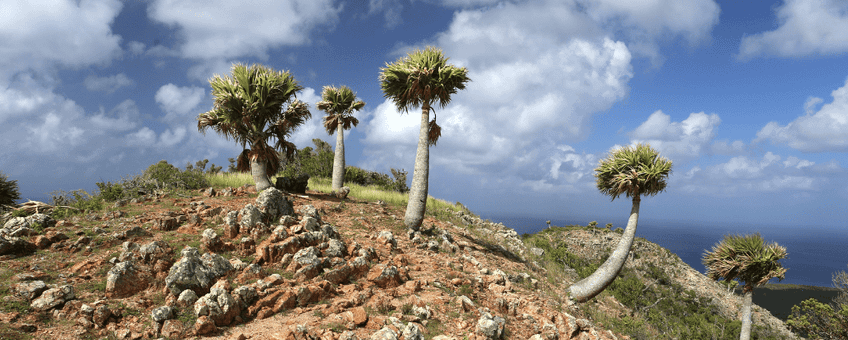
Key new insights for rare Caribbean palms
Dutch Caribbean Nature Alliance (DCNA)Bonaire’s Sabal lougheediana is extremely threatened, with only an estimated 23 mature adults still in the wild. Additionally, these palms are facing a population crisis, mostly due to continuous grazing by feral livestock (goats and donkeys), which keeps new seedlings from being established. In contrast, Curaçao’s Sabal antillensis is thriving under effective conservation strategies. New research conducted as a collaborative effort between the Montgomery Botanical Center (Florida, USA), BonBèrdè, CARMABI, Wageningen University & Research and Cornell University, employed genomic data to prove that both palms are indeed distinct species. The results confirmed their genetic uniqueness, helping to answer two questions: are these two populations indeed different species, and are ex situ conservation efforts adequately representing the genomic diversity of each species?
Genetic issues
An interesting result of this study was a severe genetic bottleneck in Sabal lougheediana, characterized by low genetic diversity and high inbreeding levels. This is a concern as genetic diversity is crucial for species resilience against environmental changes and diseases. Conversely, Sabal antillensis shows slightly better genetic health but still needs strategic conservation to maintain and potentially improve its genetic diversity.

Conservation efforts
In response to the urgent conservation needs, initiatives like the construction of a temporary exclusion fence to protect at least part of the Sabal population on Bonaire, have been implemented. This has led to immediate benefits, including a noticeable increase in seedling recruitment of plants inside the fenced area. By removing herbivorous pressure of goats and donkeys, these palms are able to reproduce and potentially increase genetic diversity over time. The implementation of the Bonaire Sabal Palm Park, a project aimed at the complete protection of the S. lougheediana on Bonaire, has been submitted to the island's government in 2020. Although funding for this project has been secured in 2023, the project is still awaiting its final approval.
Furthermore, this study's findings underscore the importance of ex situ conservation efforts, which involve preserving plants outside their natural habitats. These efforts have seen sufficient success, as the genetic makeup of the palms preserved ex situ closely mirrors those in the wild, suggesting that these conservation measures can help maintain genetic diversity should in situ conditions worsen.
 Sabal lougheediana on Bonaire (Source: Patrick Griffith)
Sabal lougheediana on Bonaire (Source: Patrick Griffith)
 Sabal antillensis on Curaçao (Source: Patrick Griffith)
Sabal antillensis on Curaçao (Source: Patrick Griffith)
Looking forward
This research is vital for the Dutch Caribbean, emphasizing the need for continued and enhanced conservation strategies. Protecting these endemic palm species is not just about preserving the current biodiversity, but also about ensuring these unique genetic lineages to endure for future generations. By integrating advanced genomic tools with traditional conservation methods, there is hope that these charismatic palms will thrive once again in their natural habitats.
More information
- The study: 'Genomic patterns of native palms from the Leeward Antilles confirm single-island endemism and guide conservation priorities'.
Text: DNCA
Images: Andre van Proosdij; Patrick Griffith
